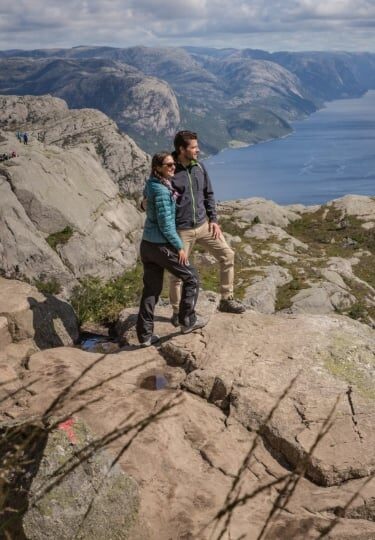Enveloping the western swathe of Scandinavia from northern Europe to the Arctic Circle, Norway is known for its vast wilderness. Soaring white mountains, breathtaking fjords, emerald-green forests, and exhilarating outdoor pursuits such as hiking and kayaking are a big part of what makes Norway famous.
If you can peel yourself away from the fjords and forests, Norway is also known for its capital city, Oslo. Here, travelers are treated to a feast of art, culture, and gastronomy on the pristine Oslofjord.
From learning about Norway’s Viking history to riding the legendary Flåm Railway, and hiking to landmarks such as Pulpit Rock, Norway offers plenty to do for all types of travelers. Here are just some of the delights that Norway is known for.
Thundering Waterfalls
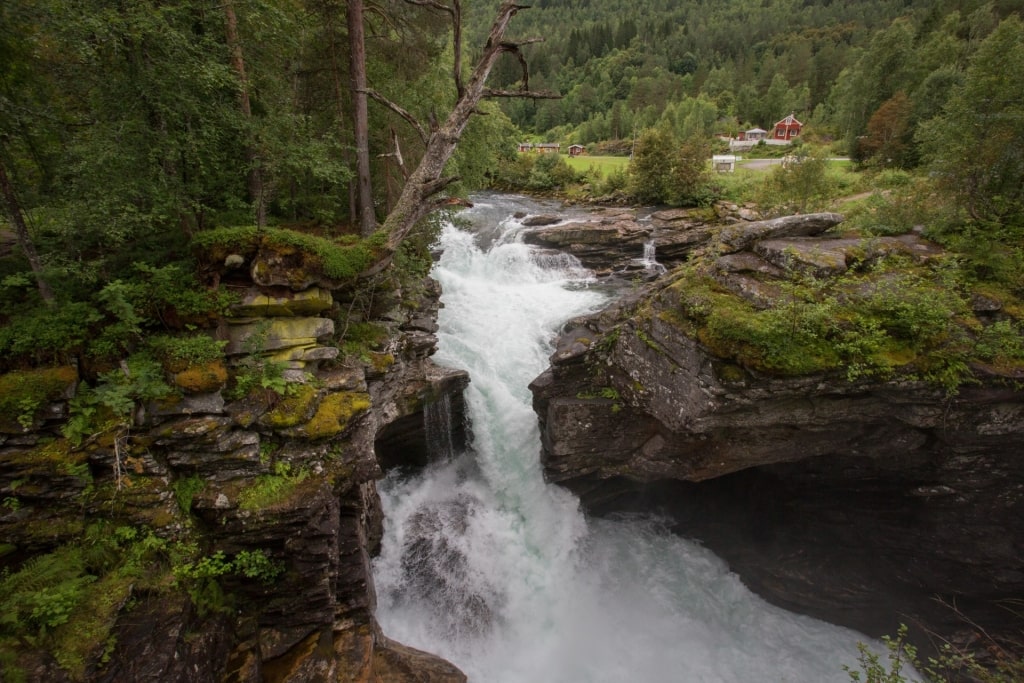
Gudbrandsjuvet
Waterfalls in Norway cascade down mountains into fjords, lakes, and rivers. These magnificent natural displays are one of the things Norway is most famous for.
Many of the waterfalls in Norway are easy to access via the west coast’s network of silky fjords. Experience the Seven Sisters waterfalls via kayaking or a boat trip on the snaking Geirangerfjord.
For an exhilarating mountain hike, make your way to Storsæterfossen near Geiranger. The route takes around one hour each way, with the trail looping behind the waterfall.
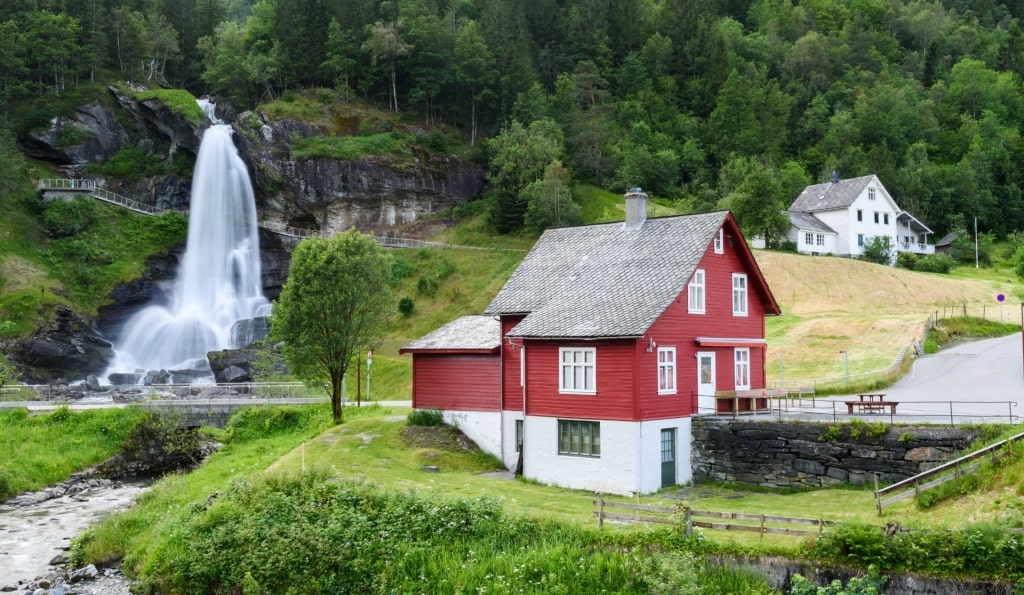
Steinsdalsfossen
Steinsdalsfossen, on the Fosselva River near Bergen, is another fantastic waterfall that offers adventurers the chance to walk behind the veil of water, via a footpath carved into the rockface.
Vettisfossen, a jaw-dropping waterfall also found in the fjords, is easily reached from Flåm, plummeting 902 feet down a mountainside. Vøringsfossen, one of the most famous waterfalls in Norway, is worth the two-hour journey from Flåm.
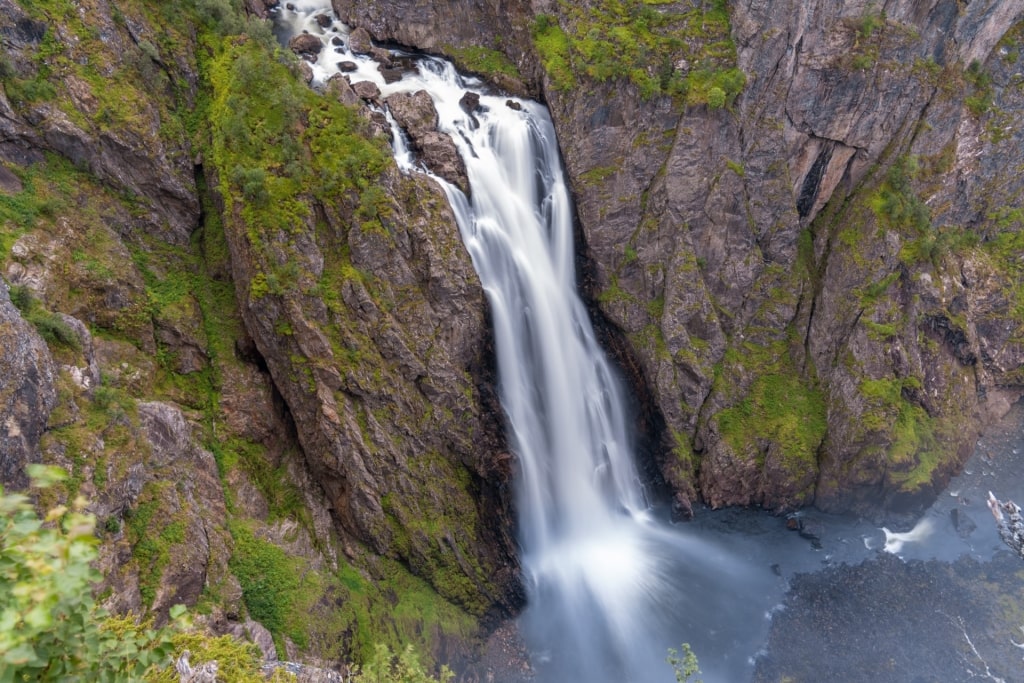
Vøringsfossen
Hike the canyon path to Vøringsfossen’s modern viewing platform to see water thunder almost 600 feet from the Hardangervidda plateau into the valley. Cross the footbridge that straddles the canyon for spectacular views from above the waterfall.
Read: Best Lakes in Norway
Oslo’s World-Beating Museums
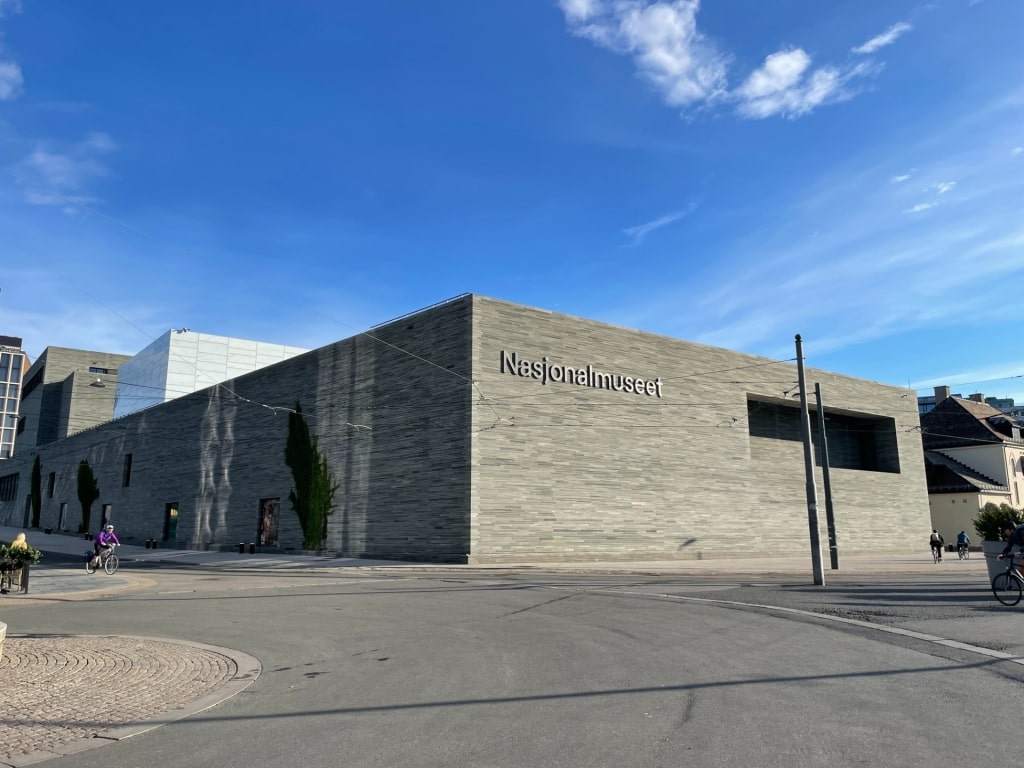
National Museum of Art, Oslo Photo by Ssu on Wikimedia Commons, licensed under CC BY-SA 4.0
Norway is also famous for its world-beating museums. Spending a day exploring Oslo’s museums is one of the best things to do in Norway, though it requires some planning, especially if you intend to cover ground at the city’s extraordinary National Museum of Art, which opened on the waterfront in June 2022.
The striking building, designed by architect Klaus Schuwerk, houses 6,500 works—across 86 rooms over two floors—combining the collections of the former Museum of Contemporary Art, the Norwegian Museum of Decorative Arts and Design, and the National Gallery.
Take a guided tour of the permanent collection or visit one of the temporary exhibitions in the Light Hall. After, head to the museum’s rooftop café for fabulous views of the inner Oslofjord and to browse the shop, and vast art library.
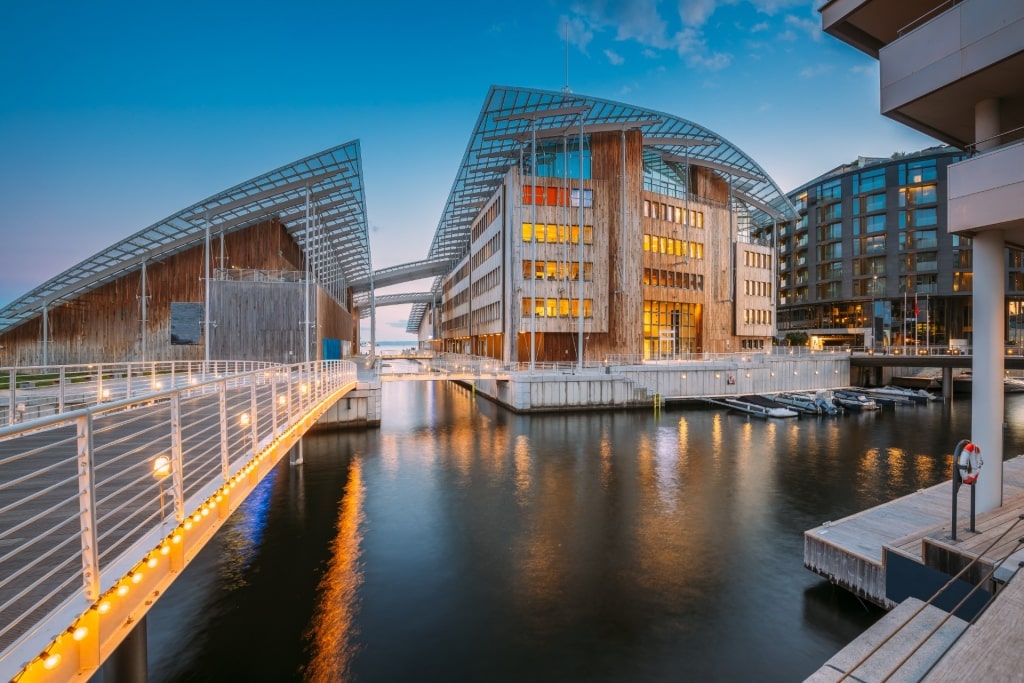
Astrup Fearnley Museum of Modern Art, Oslo
Bookmark the sensational Astrup Fearnley Museum of Modern Art to browse contemporary art by the likes of Damien Hirst and Jeff Koons.
The Norwegian Maritime Museum is a worthy stop to explore the country’s long seafaring history, while the Munch museum lures art lovers to see works by Norwegian artist Edvard Munch.
If you want to see Munch’s most famous piece, The Scream, it’s on display at the National Museum.
Tromsø
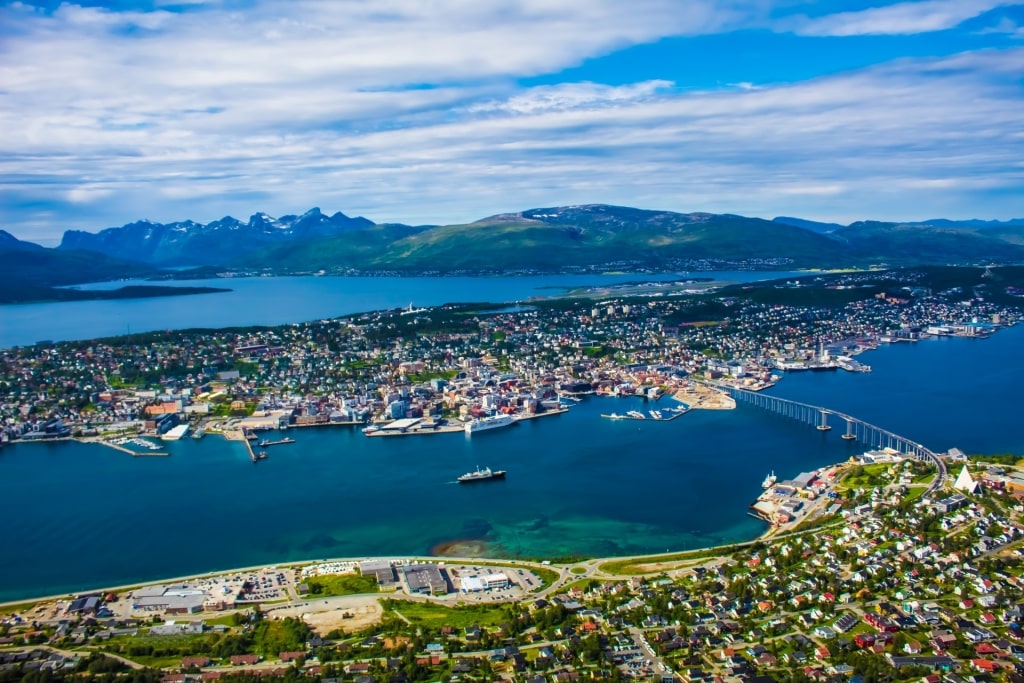
Tromsø
Known as the capital of the Arctic region, Tromsø lies 69 degrees north, almost 250 miles inside the Arctic Circle.
Tromsø is a compact and easy-to-explore city, surrounded by nature. Even during summertime, most of the peaks around Tromsø remain draped in snow.
One of Tromsø’s most iconic sights is its cantilevered bridge, stretching 3,399 feet across the Tromsøysundet strait, connecting Tromsøya with the mainland. When it opened in 1960, it was the longest bridge in Northern Europe, and walking or driving across it one of the best things to do in Tromsø.
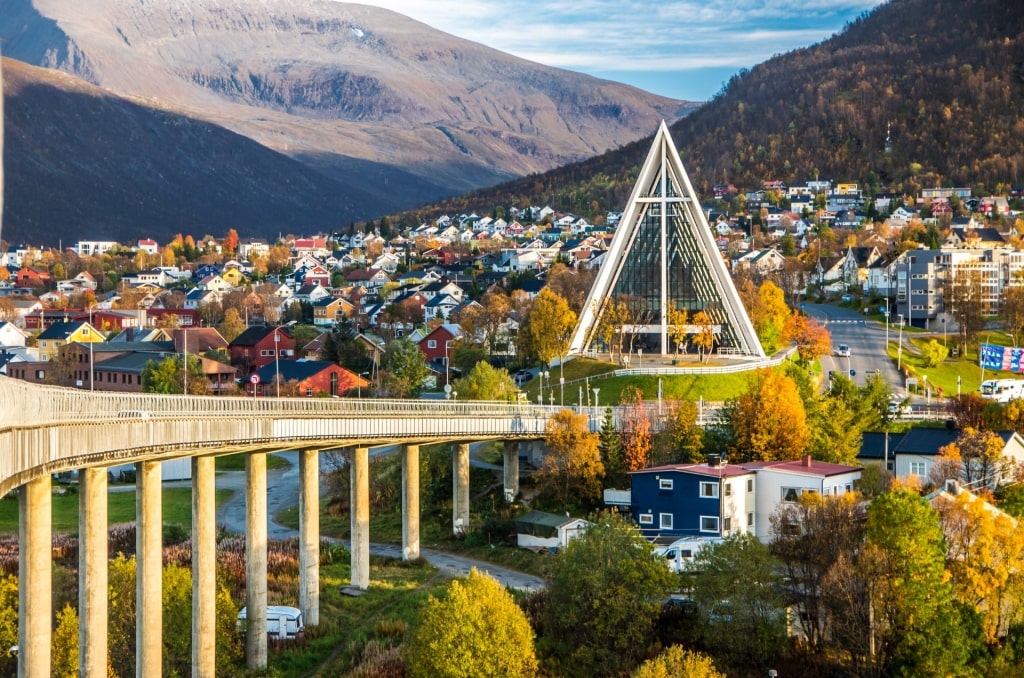
Arctic Cathedral, Tromsø
In Tromsø, visitors can learn about intrepid explorers and life in the far north at The Polar Museum.
Cross the bridge to visit the city’s Arctic Cathedral. Built in 1965, the modern church features a large glass mosaic window with a program of summer concerts. Visitors can also go wildlife spotting for puffins, eagles, dolphins, and pilot whales on a boat tour from the harbor.
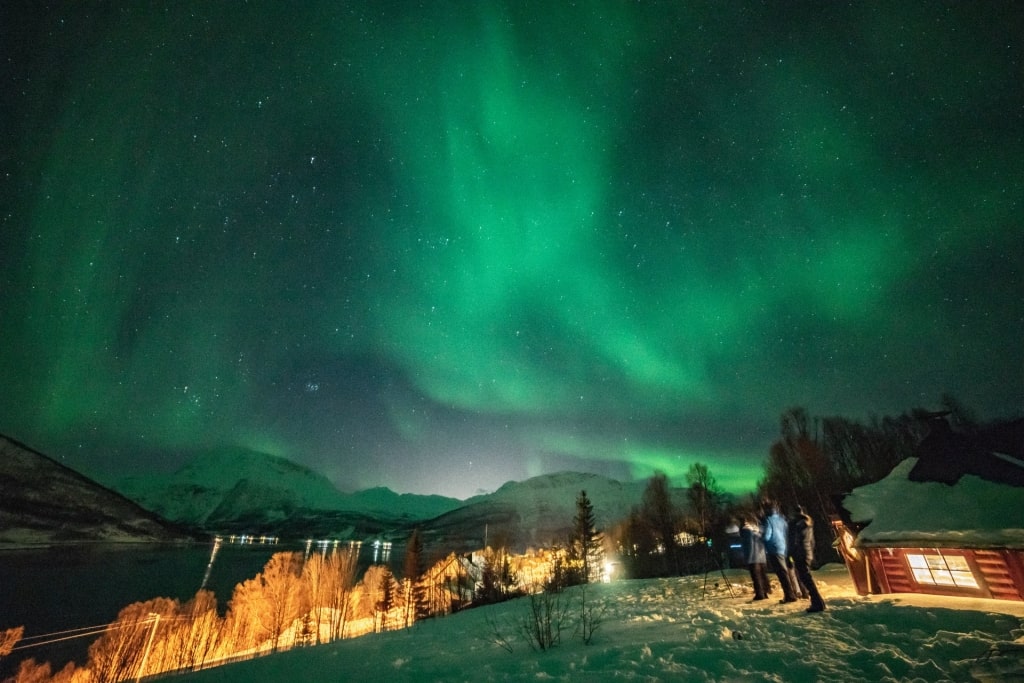
Northern lights
In the far north, one thing Norway is famous for is the Northern Lights, with Tromsø one of the best places to see the spectacular phenomenon when the sky is dark.
During summertime, however, visitors will experience the midnight sun. Around the summer solstice in June, the sun does not set, while in May, July, and early August, the sun sets for only a couple of hours each day.
With the extra sunlight, travelers can enjoy daytime activities such as hiking, swimming, and kayaking, for longer.
Beautiful Fjords
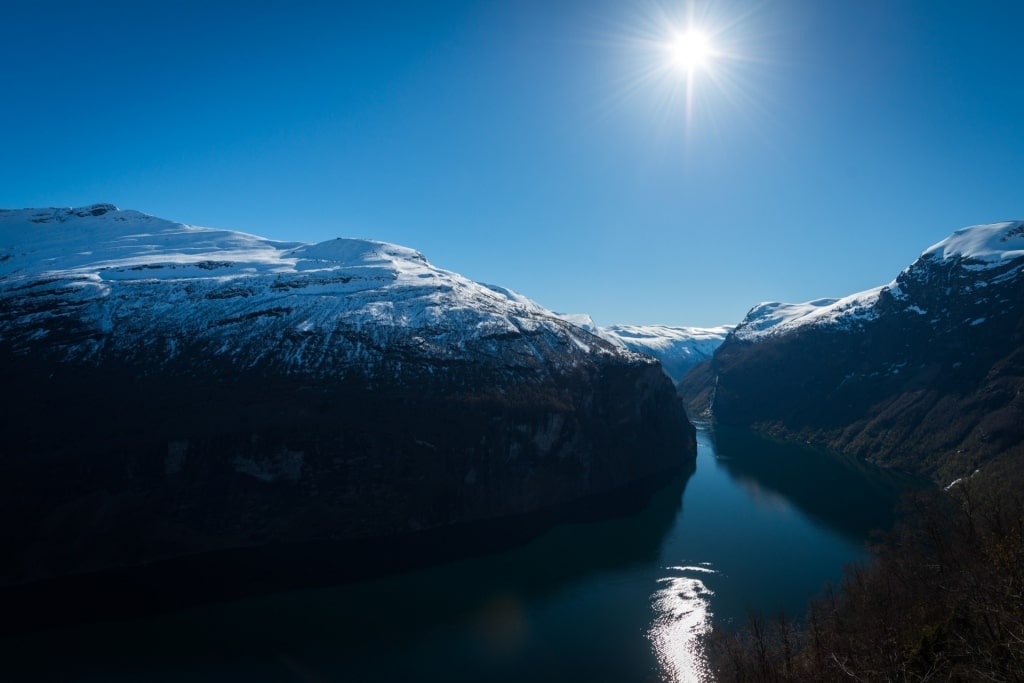
Geirangerfjord
Ask any adventurer, what is Norway known for and their response will most likely be the beautiful fjords.
Norway’s submerged U-shaped valleys were carved into the country’s craggy west coast between Bergen in the south and Tromsø in the north during the last ice age. For every fjord, there is usually one main “arm” and several smaller offshoots.
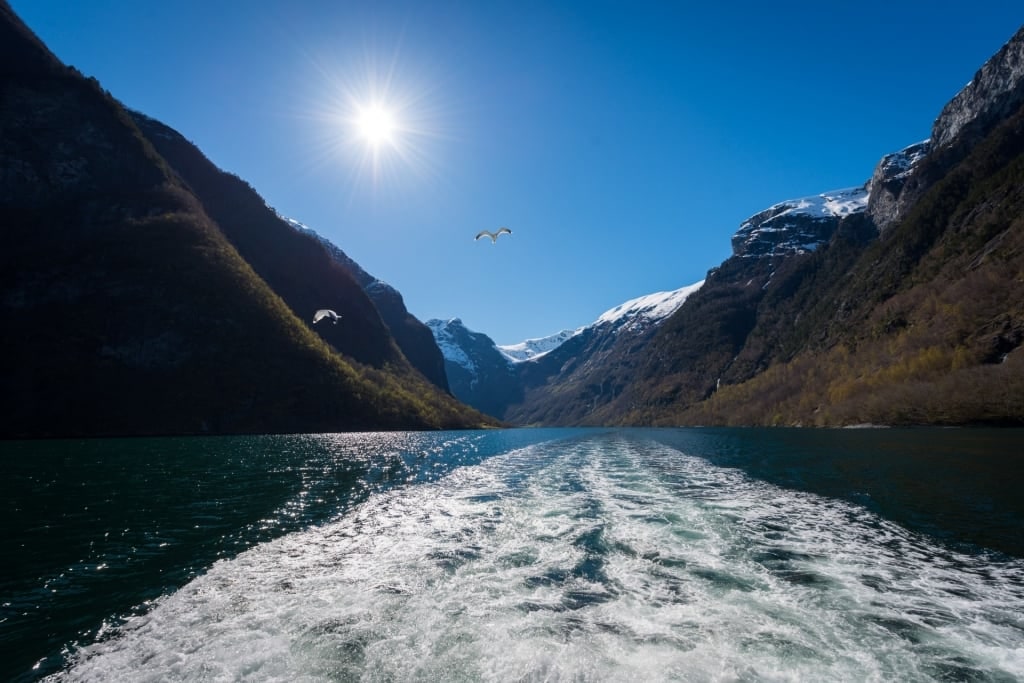
Nærøyfjord
One of the most dramatic fjords in Norway is the UNESCO-listed Geirangerfjord, a slither of the larger Sunnylvsfjorden, which is a branch of the 68-mile-long Storfjorden.
Other famous fjords include Nærøyfjord, also a UNESCO World Heritage Site; Lysefjord; Aurlandsfjord; and Hardangerfjord.
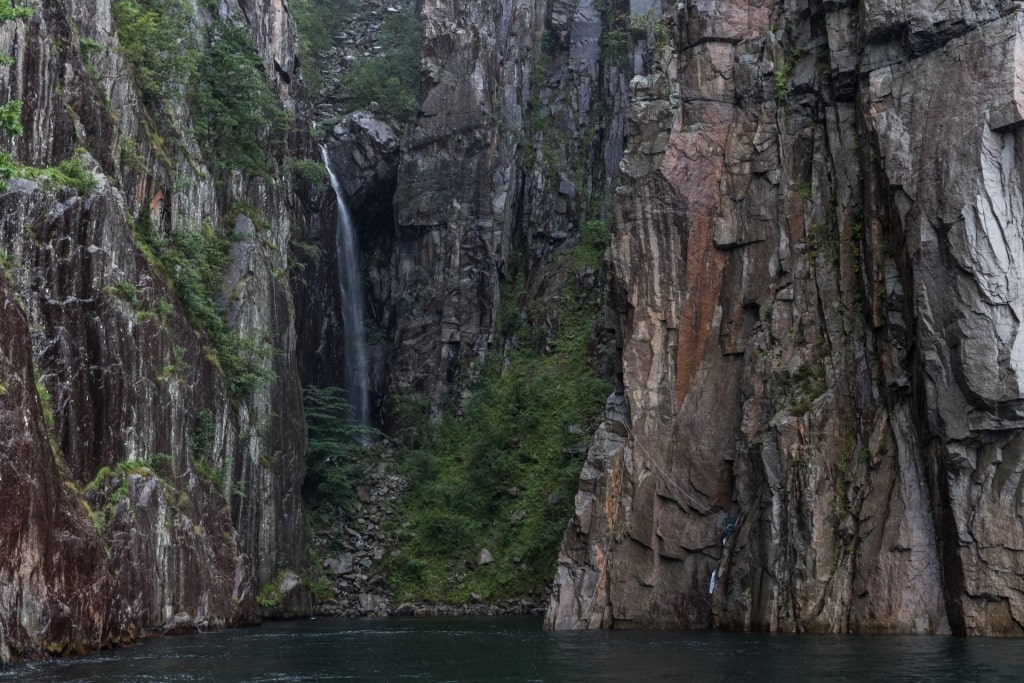
Lysefjord
From spring, as the snow melts, thick green forests are revealed and waterfalls define the fjords’ landscape. Mist often cloaks the Norwegian mountains, though typically lifts during summer, often making way for bright sunshine and ideal weather for outdoor exploration.
Kayaking, hiking, and climbing are the most popular fjord activities while exploring picture-book towns and villages dotted around the fjords—Geiranger, Flåm, Molde, and Olden—is also popular.
The Flåm Railway

Flåm Railway
Riding the 12.6-mile stretch of the Flåm Railway, also known as Flåmsbana, is one of the best things to do in Flåm. Operating since 1940, the Flåm Railway runs from the center of Flåm 2,844 feet up to Myrdal station.
The railway line is known for being one of the steepest in the world, ascending through a mountain valley, 20 tunnels, and calling at 10 stations.

Kjosfossen
Travelers can take in the gorgeous scenery from a vintage train carriage, gazing at the sparkling Flåm river and traditional black-painted Flåm church on the way. Hop off the train at Kjosfossen waterfall to breathe in the fresh mountain air and feel the fall’s invigorating spray.
After the two-hour return journey, stop by the Flåm Railway Museum on the village’s pretty waterfront. It’s open year-round, free to explore, and offers an insight into the construction of this ground-breaking railway.
Trollstigen Mountain Pass
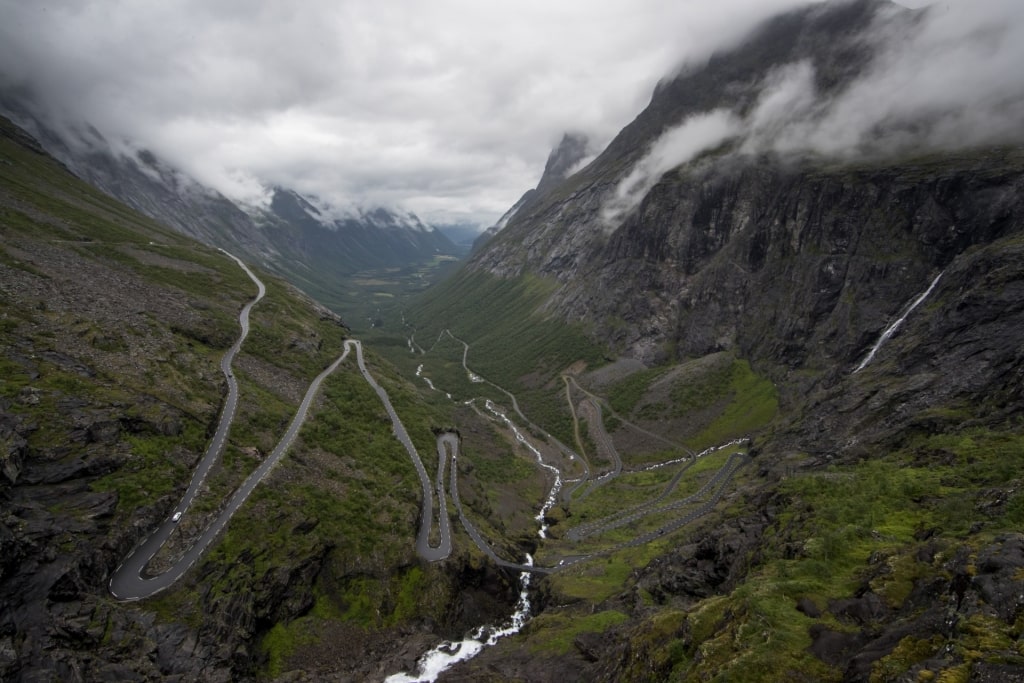
Trollstigen
Norway’s serpentine Trollstigen twists and turns over 11 dramatic switchbacks in the Romsdalen valley, around midway between Geiranger and Molde.
Nicknamed The Troll’s Ladder, the route opened in July 1936 following eight years of construction, built into the slopes of Bispen, Kongen, Dronninga, Stigbottshornet, and Storgrovfjellet mountains.
The pass is utterly dazzling, with a steep incline of 10 percent. Trollstigen is impassable during winter, opening mid-May through to fall, usually closing when the first snow falls.
Each bend is named after the construction manager who oversaw each section of the road’s construction. Look out for the one exception; Nikkasvingen (Nikka’s Bend) is named after
one of the cooks who fed the Trollstigen construction workers.
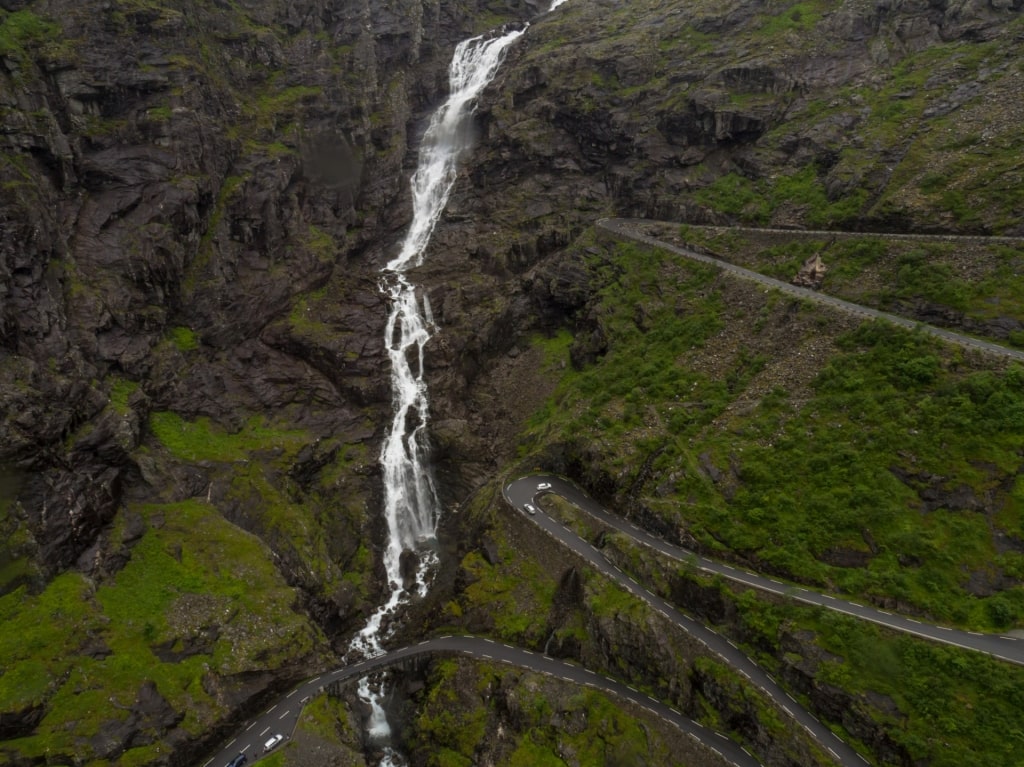
Stigfossen
Stop to admire Stigfossen, a cascading waterfall located at the second bend from the south. There’s an information and viewing point at the northern end of Trollstigen.
The most impressive lookout is The Trolls Path Viewpoint, near Trollstigen Mountain Lodge, at the southern end. Facilities here include a café, bathrooms, and a souvenir shop.
While driving is the easiest way to experience this hair-raising road, you could also walk the old path, Kløvstien, which was used for centuries before Trollstigen was built.
Kløvstien has been restored and offers energetic travelers a steep and challenging hike in Norway that’s not for the faint-hearted.
Pulpit Rock
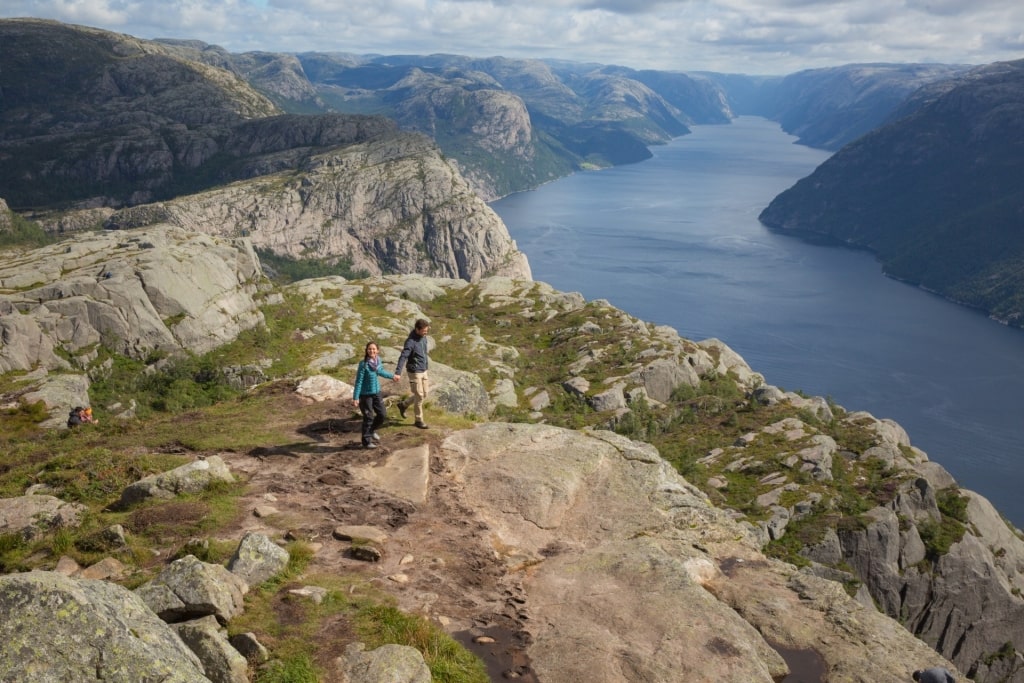
Pulpit Rock
Pulpit Rock is one of the most famous rocky ledges in the world. Called Preikestolen in Norwegian, this soaring, leaden-hued cliff rises 1,982 feet above the glistening Lysefjorden, around 45 minutes from Stavanger.
Pulpit Rock is emblazoned on postcards sold in souvenir stores around Stavanger, though this eye-popping landmark is one you really should see for yourself. Hike to the flattened cliff-top plateau for far-reaching fjord and mountain views.
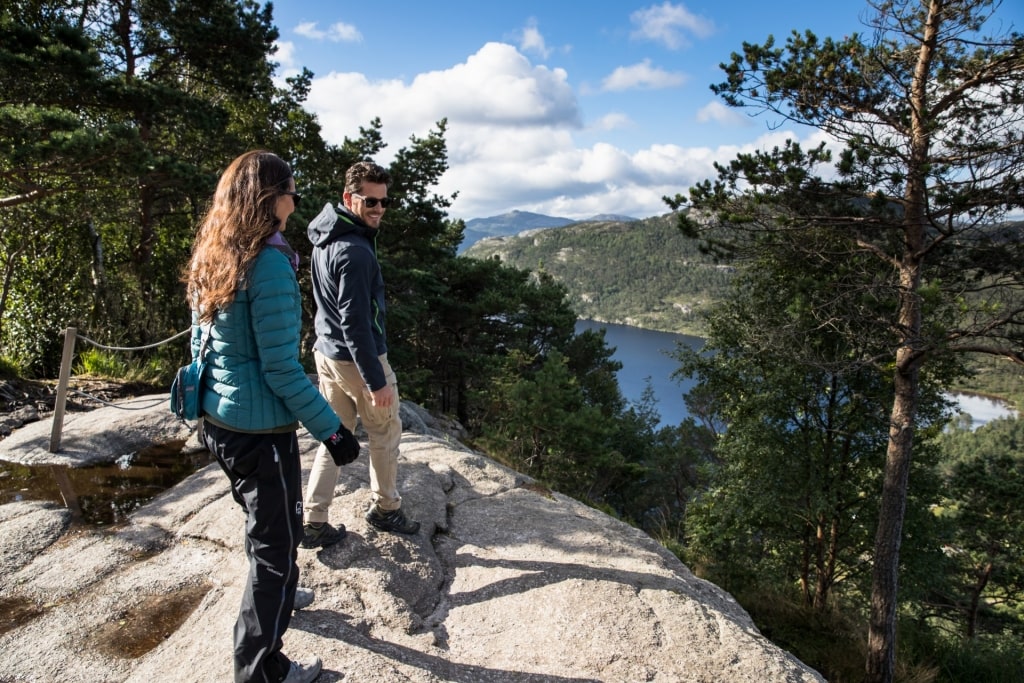
Pulpit Rock
Summer is the best time to visit Norway to tackle this fantastic hike. It’s an all-day trek on a well-marked trail that was improved by Nepalese sherpas in 2013.
The path covers around five miles so is not suitable for travelers with mobility issues. Comfortable hiking boots and outdoor wear are essential, along with water, snacks, a camera, and a head for heights.
Read: Best Things to Do in Stavanger
The Royal Palace
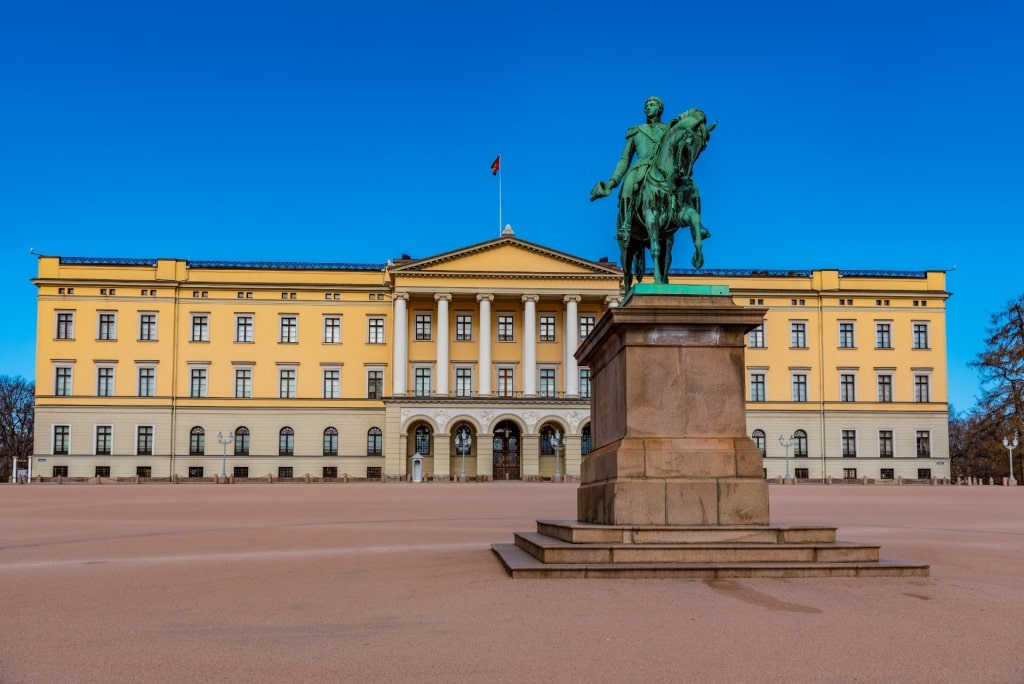
Royal Palace, Oslo
The elegant Royal Palace in Oslo is the official residence of Norway’s Royal family, the House of Glücksburg. Set within a picturesque tree-lined park on an elevated position to one end of Karl Johans gate, the Royal Palace is a stuccoed, neo-classical building completed in 1849.
King Oscar I was the first monarch to reside at the palace, which is currently home to King Harald V and Queen Sonja.
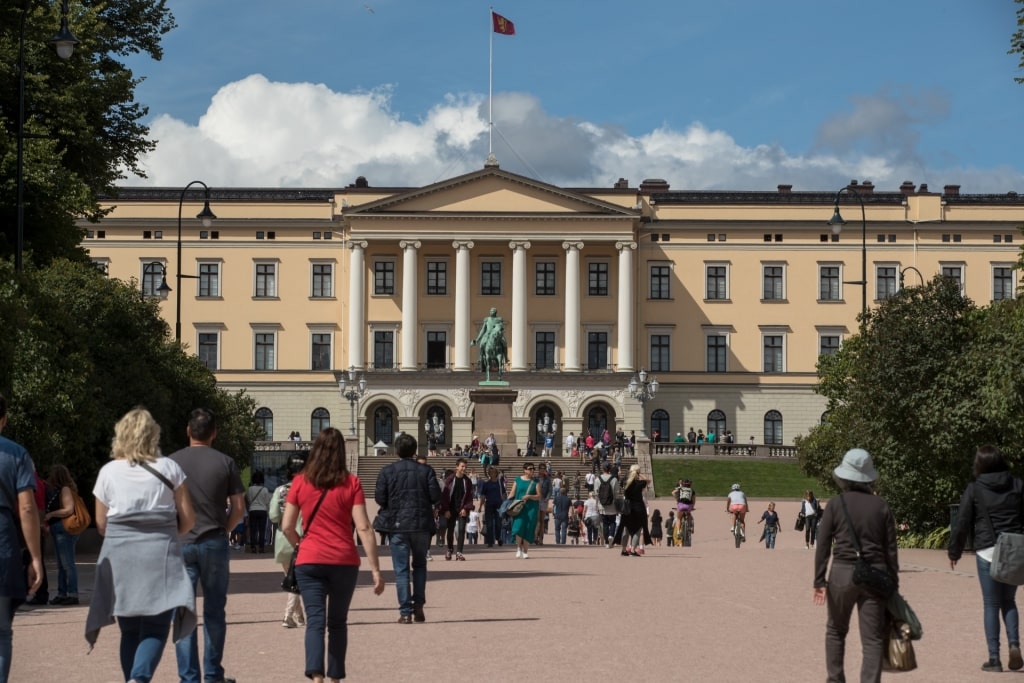
Royal Palace, Oslo
The doors of the Royal Palace are open to members of the public from late June until mid-August with guided tours offering the chance to look inside. See the Council Chamber, where King Harald V oversees the Council of State sessions on Fridays. Peer into the opulent Banqueting Hall, where state dinners are held, and wander into the lavish King Haakon VII Suite.
Each year the Royal Palace also presents a new exhibition as part of the tour. Look out for the changing of the guards, which takes place daily at 1:30 p.m.
Read: Extraordinary Castles in Norway
Briksdal Glacier
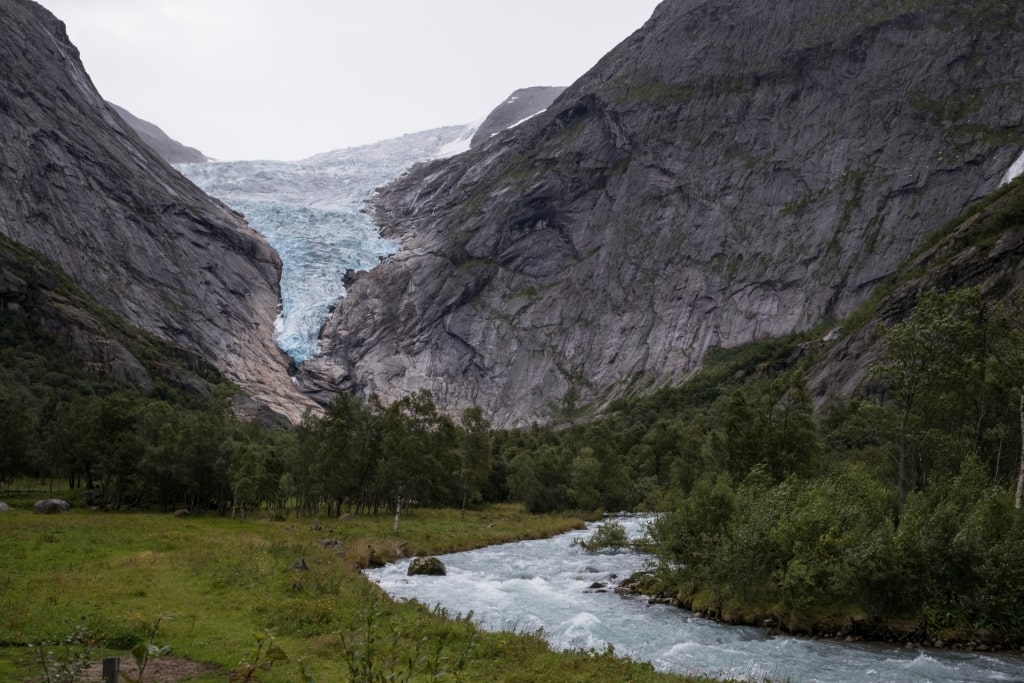
Briksdal Glacier
The mighty Briksdal Glacier is one of the most beautiful places in Norway. Lying within Jostedalsbreen National Park, Briksdal is an accessible arm of the Jostedalsbreen glacier—the largest ice cap in mainland Europe.
Embark on a thrilling hike to see the milky-blue Briksdal. The 1.8-mile trek is partially uphill, but it rewards hikers with rivers, waterfalls, and even the odd grazing mountain goat along the route.
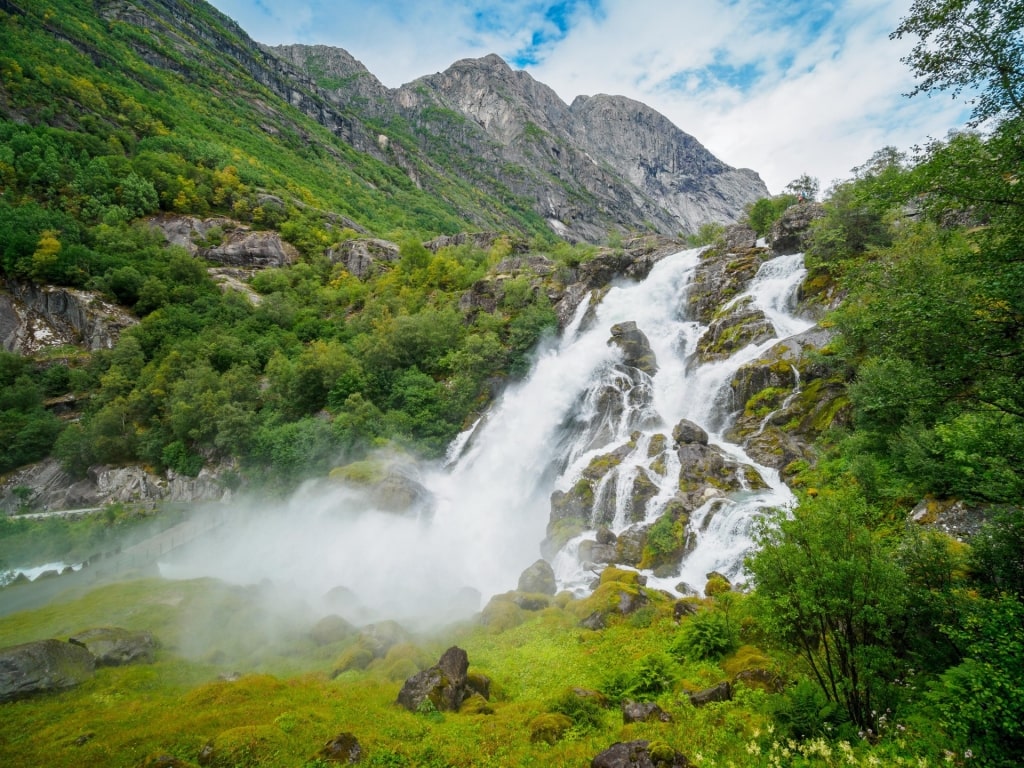
Kleivafossen
Feel the welcome spray of Kleivafossen waterfall as you cross the bridge to reach Briksdal.
Less mobile travelers can pre-book the troll safari, a wonderful slow-travel experience in an open car, to witness Briksdal Glacier at a more leisurely pace.
Spend plenty of time gazing at the glacier, which formed around 2,500 years ago. Images and information are displayed on the route to highlight how much the Briksdal Glacier has receded over time. A café, bathrooms, and gift store are located at the start/end point.
Bergen Harbor
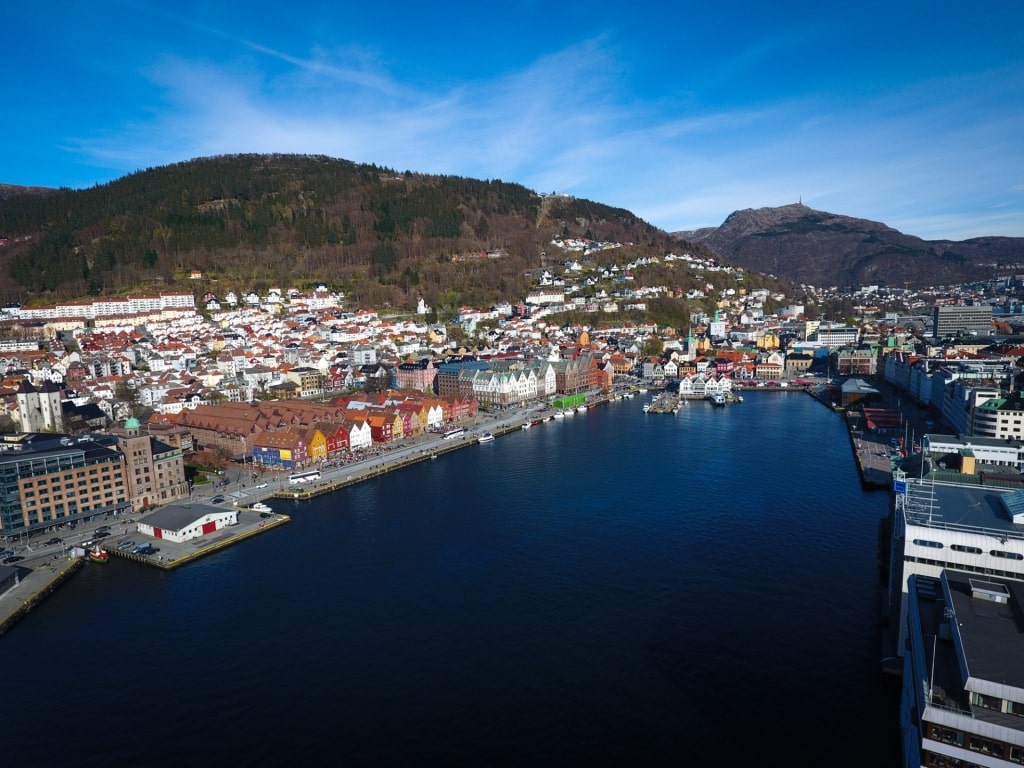
Bryggen, Bergen
Bergen is one of the most glorious cities in Europe. Central to its charm is Bryggen, the old wharf area of the city where a row of white, mustard, and rust-colored timber buildings line the waterfront.
Sixty-two of Bergen’s olde-worlde buildings remain around the harbor, a busy centuries-old trading port that’s one of the oldest in Northern Europe.
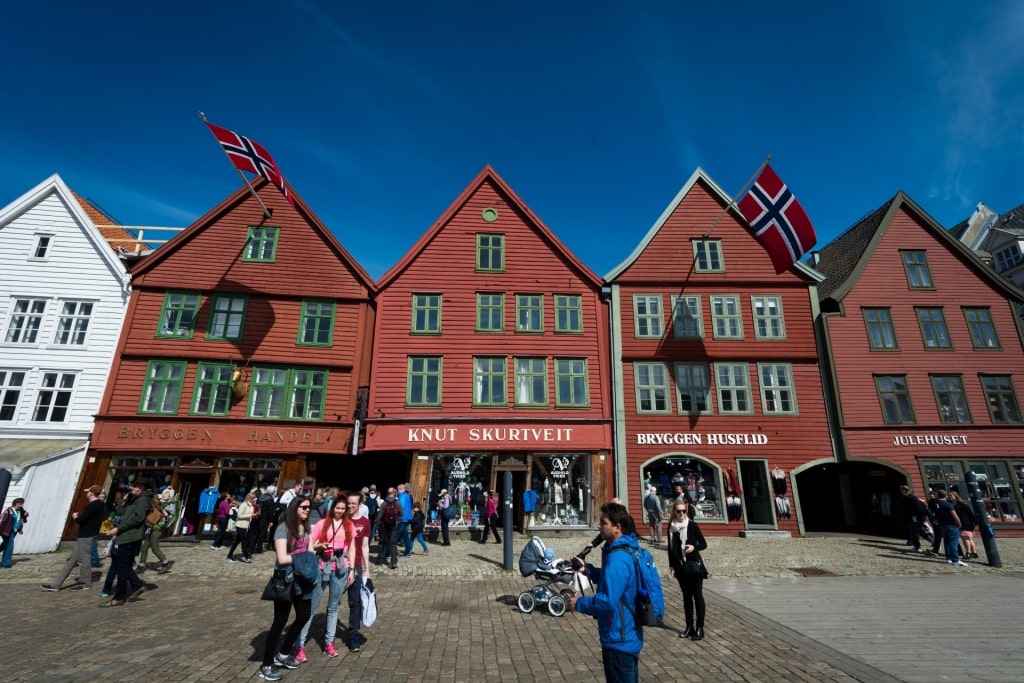
Bryggen, Bergen
One of the best things to do in Bergen is to stroll the cobbled streets and admire the quaint buildings. Some have been meticulously rebuilt to the same template as the previous structures following devastating fires.
Discover more about the district’s history at the Bryggens Museum. The museum displays the archaeological finds from a major 1955 excavation, including the foundations of the oldest building in Bergen that dates from the early 12th century.
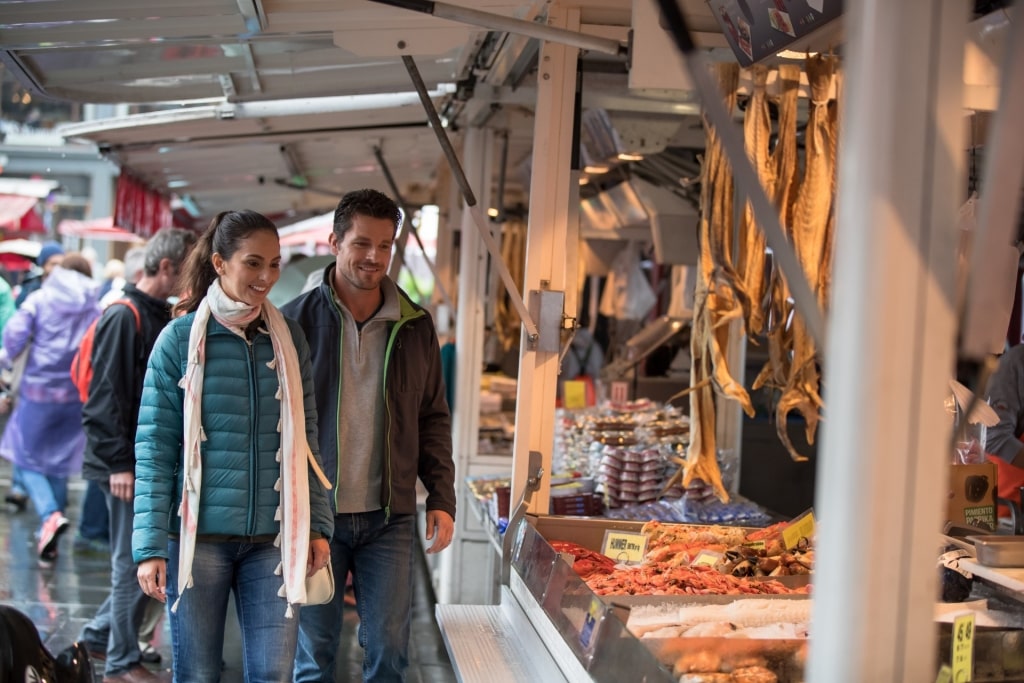
Fish Market, Bergen
After a Bryggen history lesson, head for Bergen’s sublime waterfront Fish Market. It’s one of Norway’s best markets, with stalls lining the harbor selling an array of just-off-the-boat seafood. Make a beeline for a selection of mouth-watering sushi.
Traditional fish and chips (thick-cut potato fries) and fish soup are also popular with plenty of places to eat in or takeaway around the fish market.
Read: The Ultimate Norwegian Food Guide
Norwegian Vikings
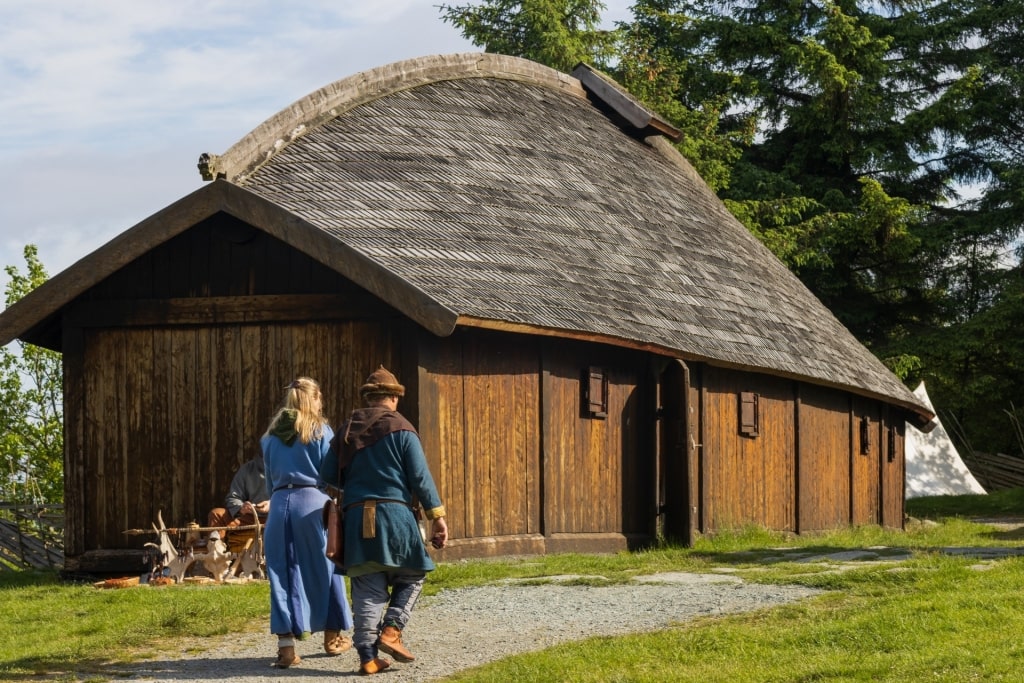
Bukkøy
Vikings played an enormous role in history with plenty of places to learn about the Viking period, which lasted from the 8th to the 11th century, at museums and living farms in Norway.
Skilled farmers, boat builders, and seafarers, Vikings traveled in their innovative longships, founding and conquering cities and territories across northern Europe and beyond. In what is now Norway, settlements were established and battles were also fought.
The most significant clash was arguably the Battle of Hafrsfjord near Stavanger in the 9th century. This ferocious fray resulted in the unification of Norway and Viking leader Harald Fairhair becoming the first Norwegian king.
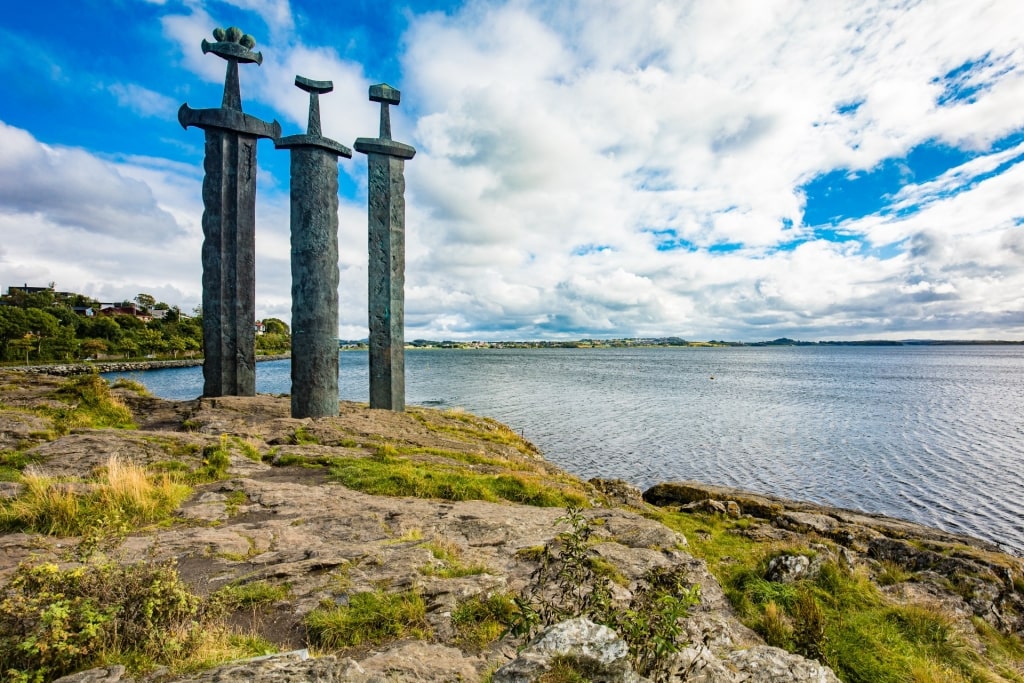
Sverd i Fjell, near Stavanger
At Stavanger’s Viking House, visitors can don a headset to learn about the Battle of Hafrsfjord and come face-to-face with Vikings through a 25-minute virtual reality experience. There’s also a towering monument of three bronze swords, Sverd i fjell (Sword in Rock), marking the 872 battle in southwest Stavanger.
Step back in time 1,000 years at the immersive Viking Farm near Avaldsnes in southwest Norway.
Set on the small verdant island of Bukkøy near a Middle Ages church, this working farmstead has a longhouse, a boathouse, a roundhouse, and a cluster of smaller buildings to discover. The 10th-century setup offers a glimpse into what life was like for Vikings in the region.
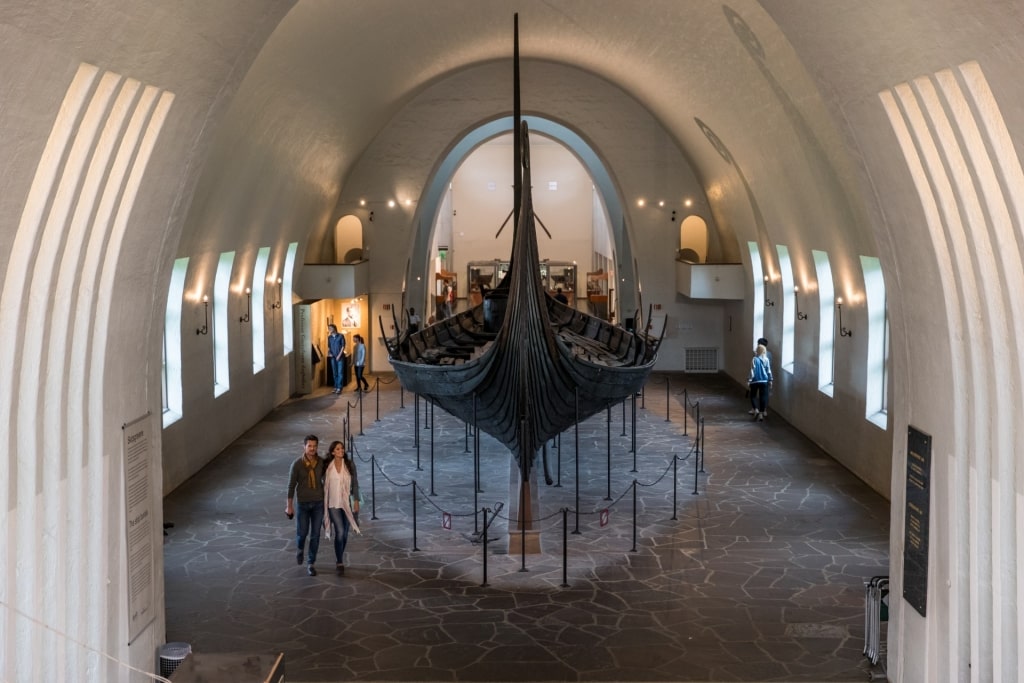
Viking Age Museum, Oslo
When Oslo’s Viking Age Museum reopens in 2026, visitors will get to marvel at the best-preserved Viking ship in the world. Until then, the city’s History Museum also houses a remarkable collection of Viking artifacts.
Read: Norwegian Culture: Fascinating Customs & Traditions
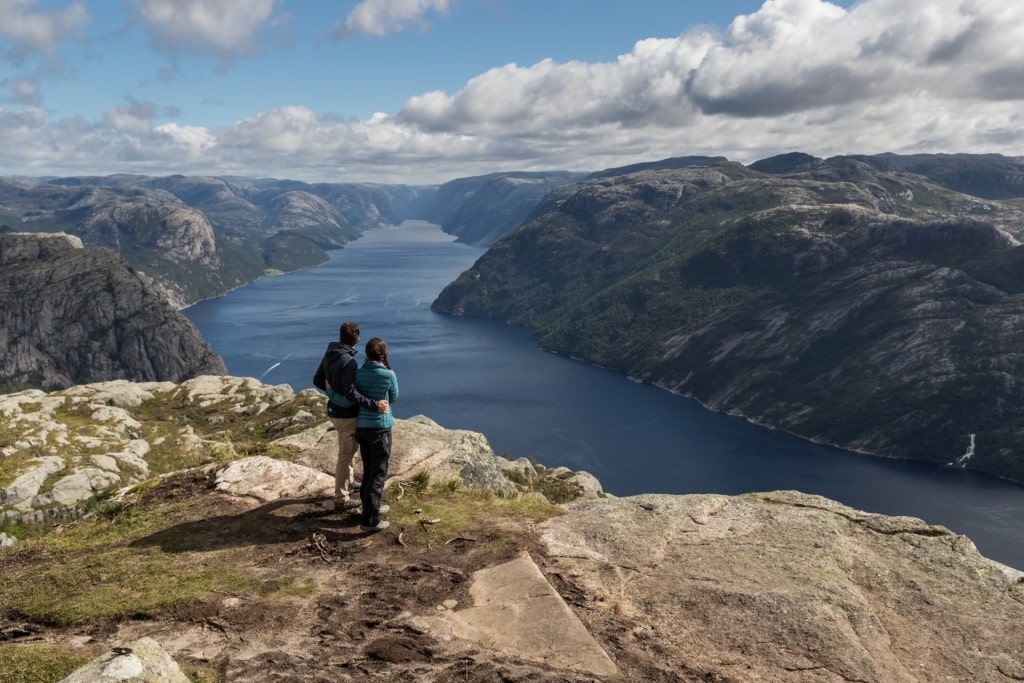
Pulpit Rock
What is Norway famous for? This Scandinavian country is known for being one of the most beautiful countries in the world with nature, art, and culture in abundance. Browse Celebrity’s cruises to Norway and experience your next European vacation.
